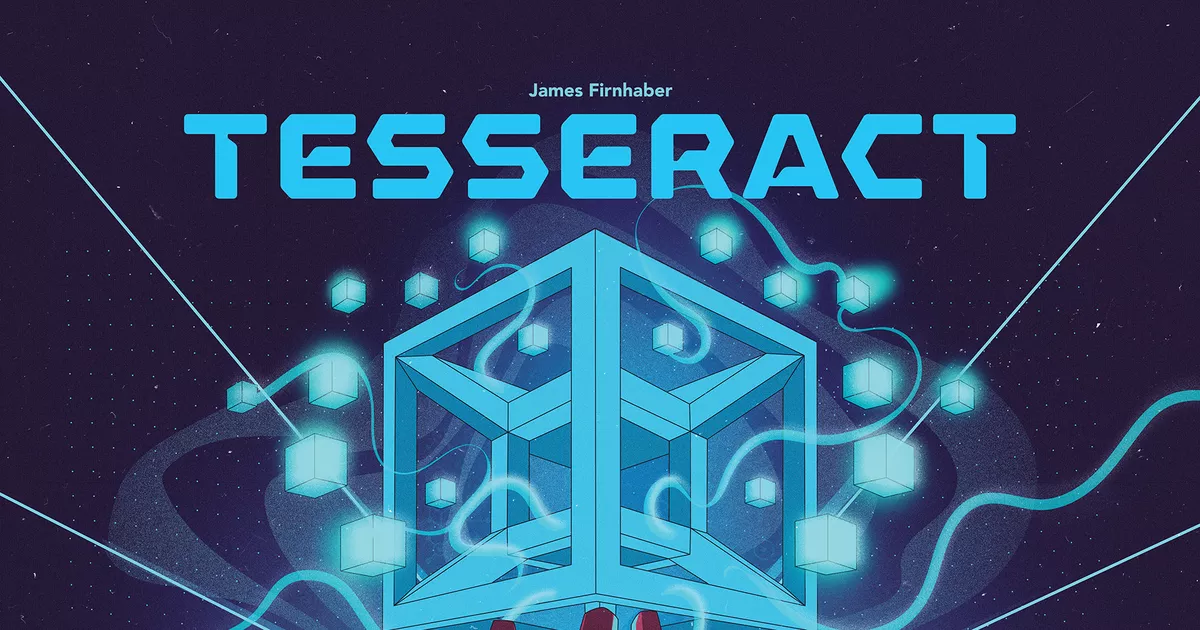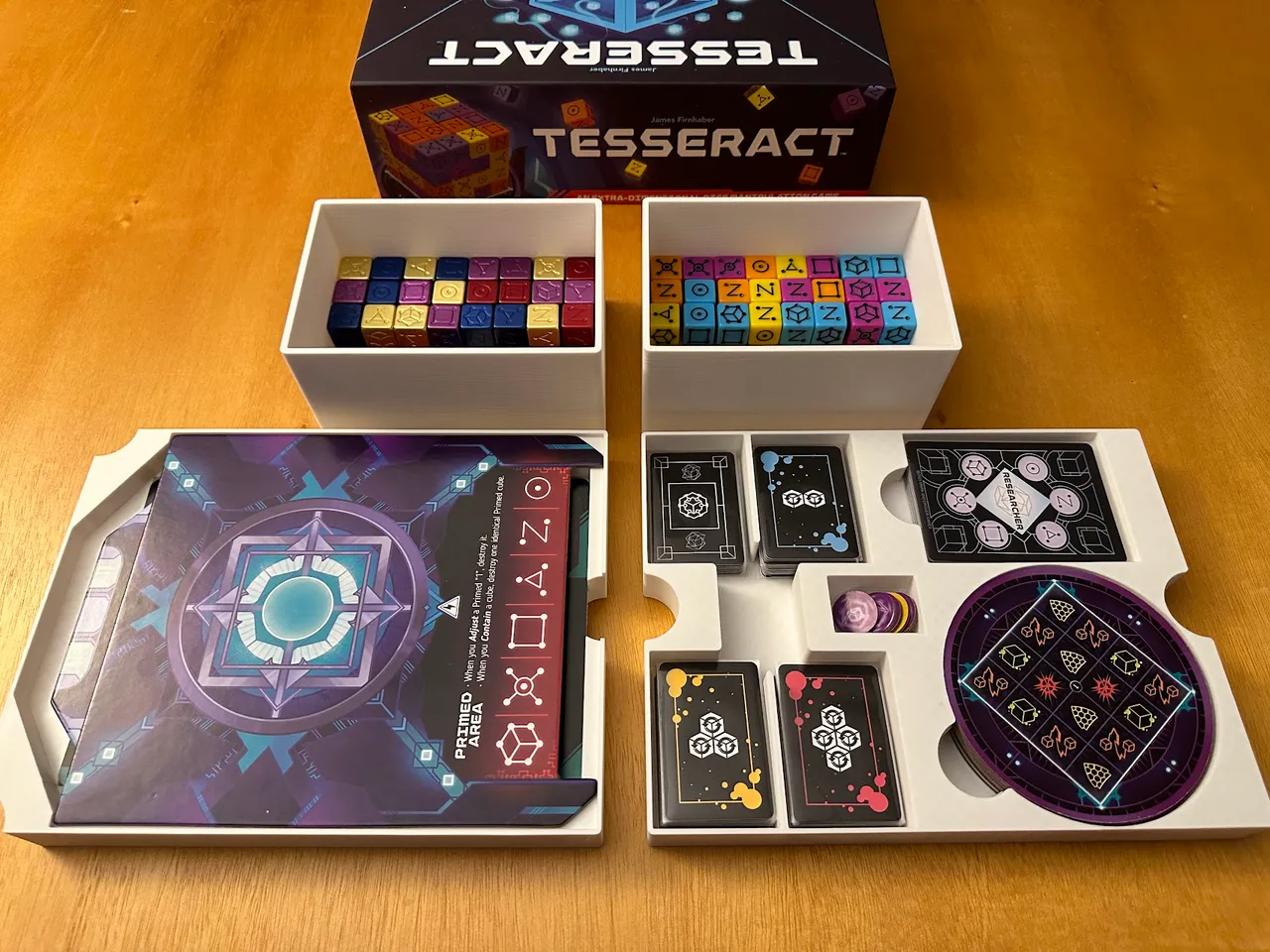Tesseract Board Game Review
I’m definitely a fan of competitive games for our board game nights, but there are some in our group who prefer cooperative experiences over competitive ones. I’m OK with that as well, but the cooperative experience needs to be deep mechanically for me to really enjoy what we are doing. It’s why I don’t prefer games like Unlocked! As much, and games like, well, Tesseract so much more. This dice drafting, manipulation game is phenomenal, and a cooperative game I think everyone should have!
In Tesseract, players will be removing cubes from a central board and placing them into their player labs, attempting to create runs of 3 or more, or sets of 3 or more, in order to fill up the central board with numbers 1-6 in four different colors.
Be careful though, because after you take your actions, the Tesseract will begin to crumble and dice will be removed. This could cause breaches in primed area (when you have 3 and/or 6 or more of the same number) which will get you closer to losing the game, or could trigger events that, let’s face it, are NEVER good.
Each player gets a unique scientist that will have some ability that allows them to break the game. A few of our favorites, for example, is the scientist that allows you to take an extra unique action, if the first 3 actions you took were all different. We also liked the scientist that let you instantly contain a number from your player lab if there were at least 3 or more of that number in the primed area.
These scientists make or break your game if not used properly, and since there are so many included in the box, at least for a while, each game is going to feel a bit different.
The other way games feel different is the difficulty level you choose to play at. While the cubes are going to be added to the Tesseract randomly using the included sleeve, the plate you place them on get increasingly more difficult, with worse events and more ways to lose. This again allows players to play multiple times while slowly progressing through increasingly more difficult stages. It is an obvious perk of it being originally a Kickstarter project – these were probably stretch goals at some point.
It is all the decision space that Tesseract provides that gets me so excited. Do I take a cube off the Tesseract that might help us, even though it gets us closer to depleting a column of dice and unveiling an event? Do I transfer a cube to another players lab, hoping they can use it better on their turn? When should I use my unique power?
Is it worth manipulating a #1 die in the primed area to make it a zero and destroy it from the game? All of these decisions run through your head turn in and turn out, and it’s a great feeling (or an agonizing one) if you choose the right moves.
I love that there really is just one area to worry about when it comes to negative impacts. Sure, when a column on the Tesseract is removed an event will happen, but that’s going to happen at some point no matter how much you plan. The real thing you want to focus on is the primed area, where a cube will go each round, being removed from the Tesseract, rolled, and placed in that area. 3 or more of the same number and a single breach happens. 6 or more of the same number and a double breach will happen.
After a certain number of breaches, the game ends and you lose. Deciding when to manipulate these cubes is a huge part of the game. You can make a 5 into a six if that might help contain any potential breaches. May be you need to spend all three of your actions making a 3 into a 2, a 2 into a 1, and destroying the cube by making the 1 a “zero.” These are huge decisions and they ALWAYS feel like they matter.
This is a game full of decisions, and while the first few levels are definitely easier than the last couple, the entire experience is so worth it. This is a game we highly recommend if you love cooperative experiences! Give it a go!





